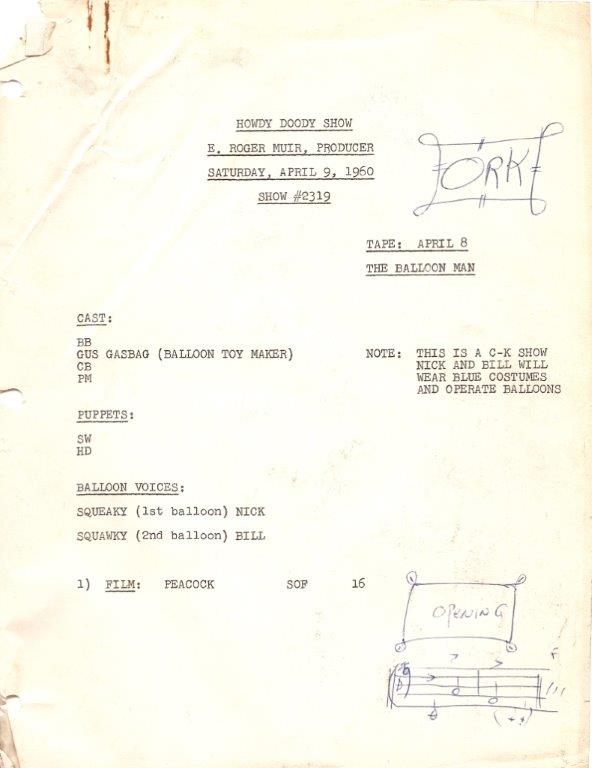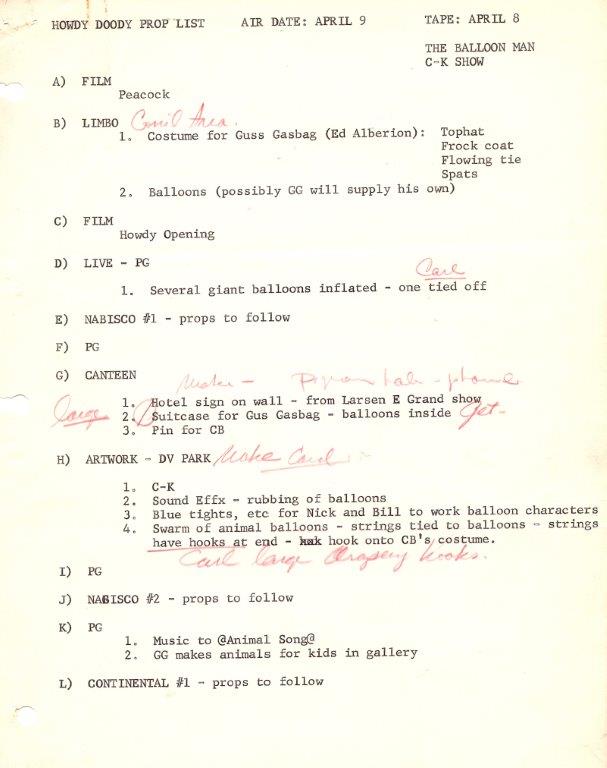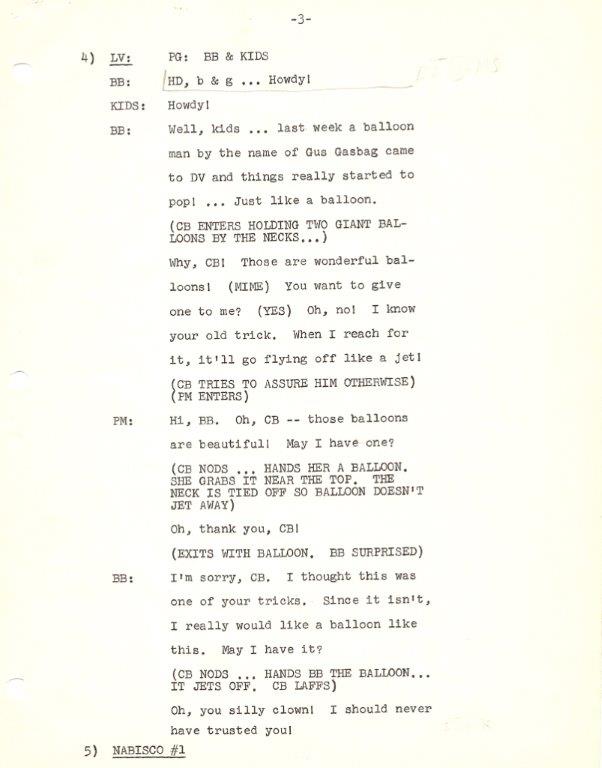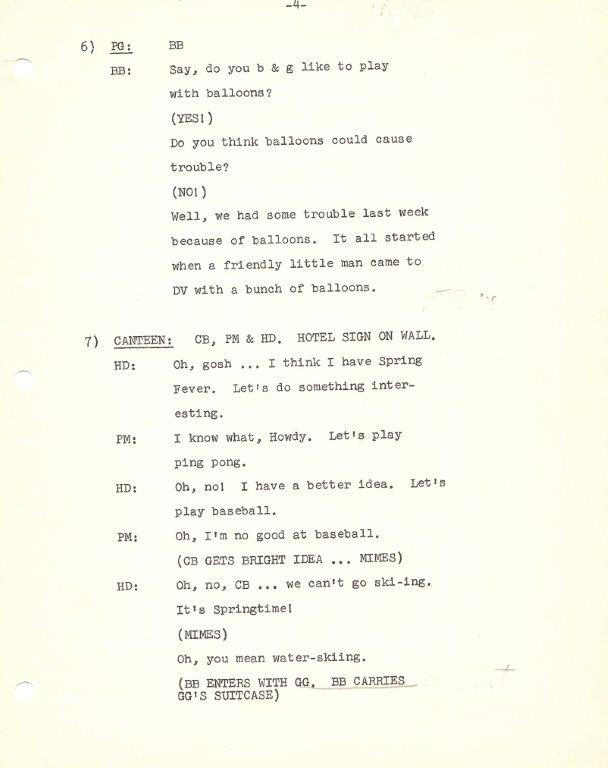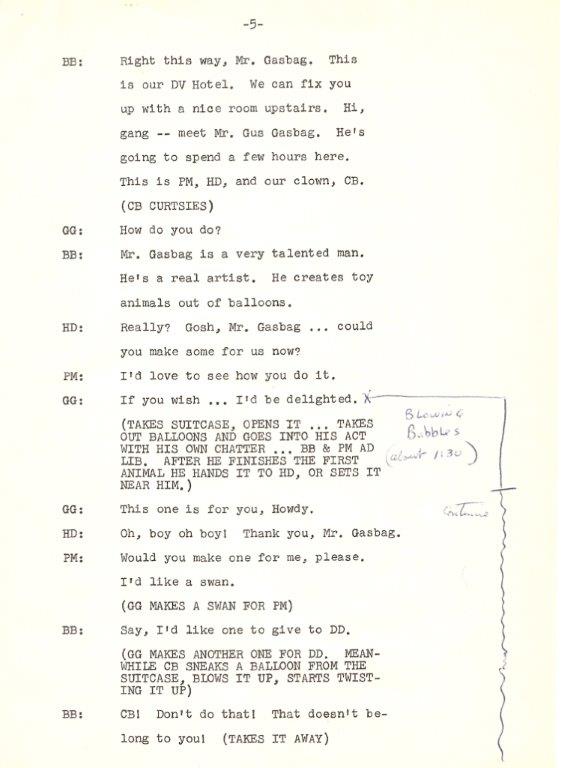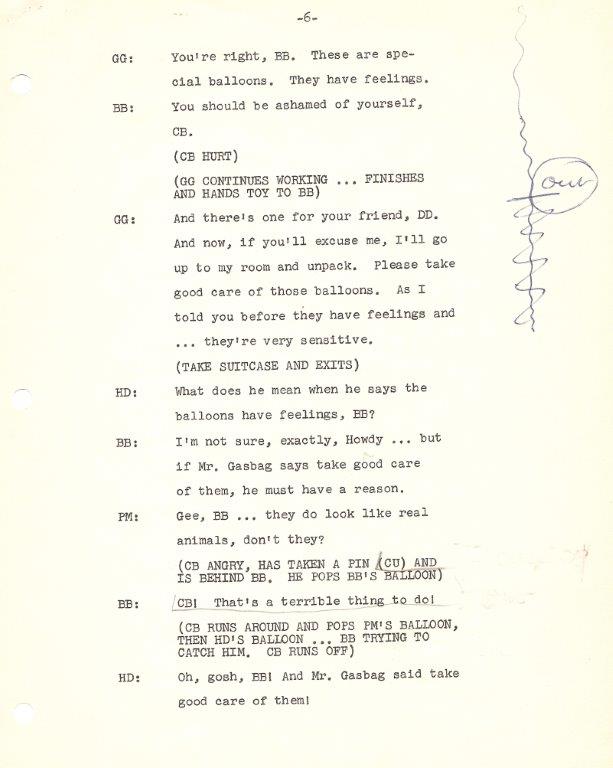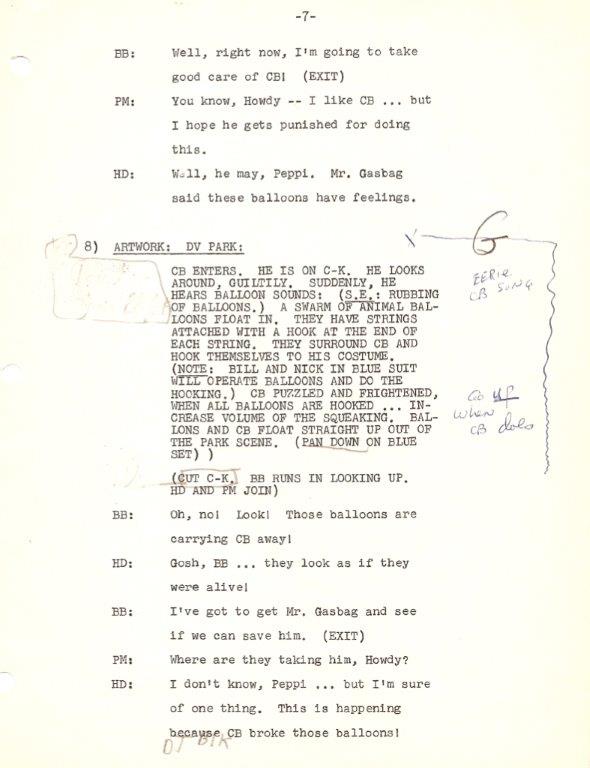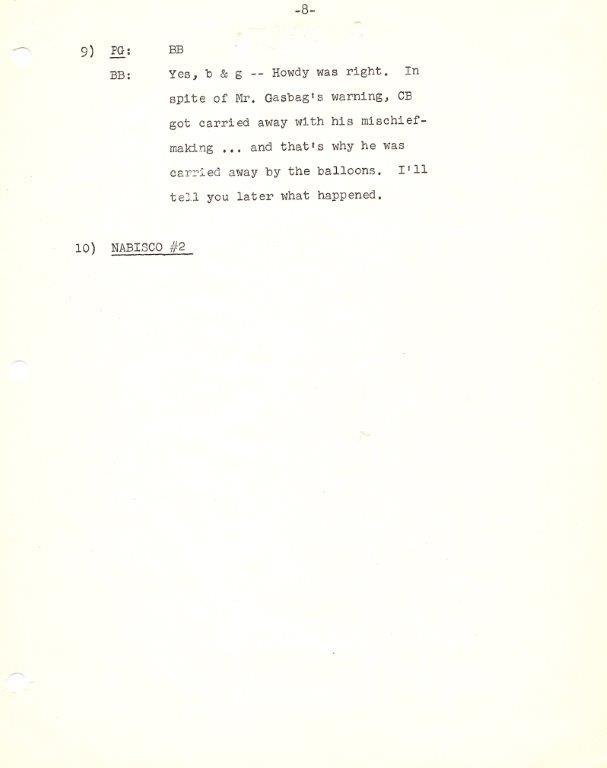October 21, 1954…James Bond Moves From Page To TV Screens
October 21, 1954…James Bond Moves From Page To TV Screens
On this day in 1954, Barry Nelson became the first actor to play James Bond. Before this, 007 had only been a literary character in the novels written by Ian Fleming.
The event was a one hour, live presentation of “Casino Royale” on “Climax”; a Sunday night CBS drama showcase that ran from ’54 till ’58. Fleming was paid $1,000 to adapt the novel to a screenplay for the CBS production.
It would be six more years before Bond came to the big screen with “Dr. No” in 1962.
Interestingly, the run time for the TV play is 00:51:45 leaving only 8 minutes for commercials. How refreshing! -Bobby Ellerbee


A Guided Tour Of Some Of Television’s Early Studios…
A Guided Tour Of Some Of Television’s Early Studios…
You may have seen this before, but may not have known the historic places you were seeing. Today, we will remedy that with a guided tour of this film, so let’s get started.
At 1:58 we are in GE’s WRGB in Schenectady NY. RCA began as a part of GE and early on, this facility was the GE experimental television center.
At 2:36 we see in the foreground at WRGB a three wheel camera “trolley”. It survived and is now on display at the Schenectady Museum along with two of these camera.
At 3:00 we see television’s first ever Mobile Unit…the twin van RCA creation with the camera control in one and the transmission gear in the other. These 38 foot units were built in 1938.
At 3:20 an RCA Field Iconoscope camera is being mounted and just after that, we are in the camera control van.
At 3:55 we see an RCA Type 1840 Orthicon camera in action. This is the first version of this camera we saw here yesterday.
At 4:04 we enter hallowed ground. This is NBC Studio 5F which was home to the first ever television film chain with a 35 and 16MM capacity. It was built in 1936, just after Studio 3H was converted from radio to television.
At 4:15 we get a rare look as CBS Studio 41…the largest of the two production studios at their Grand Central Terminal location. The cameras are the RCA A500 Iconoscope models. Studio 42 was a bit smaller.
At 5:06 we see the first ever animated television ID. I think the voice is Ben Grauer. This was rolled from Studio 5F.
At 5:30 we see the NBC antenna atop the Empire State Building
At 5:44 we are back inside WRGB where we get a look inside one of the GE Iconoscope cameras.
At 8:14 we are inside the RCA plant in Camden.
At 8:40 we may be inside the RCA Labs in Princeton where much of the early television testing was done.
Enjoy and share! -Bobby Ellerbee
A U.S. Armed Forces report about the future of television in 1945. Footage from this subject is available for licensing from www.globalimageworks.com
The Historic Hudson Theater…Newly Renovated & Broadway Ready
The Historic Hudson Theater…Newly Renovated & Broadway Ready
Look what they found in the basement!
In 1995, the theater was bought by the Millennium Broadway Hotel and used it as a conference center, but last year it was sold to the London based Ambassador Theater Group. Since then, the theater has undergone more major renovation, and will soon become a Broadway theater again, just as it began in 1903, but here is some of The Hudson’s TV history.
The Hudson Theater became NBC’s newest New York studio on September 25, 1950 with the debut of “The Kate Smith Show.” Her daytime show was on at 4PM weekdays from ’50 till ’54. From September of ’51 till June of ’52, she also hosted the “Kate Smith Evening Hour” at 8PM Wednesday nights from the Hudson.
On Sept 27, 1954, “Tonight” with Steve Allen debuted from The Hudson and stayed there until December of 1959. Jack Paar had taken over in June of ’57 after the strain of hosting “‘Tonight” and, the Sunday night “Steve Allen Show” became too much for Steverino. Both Allen shows were done at The Hudson.
With the January 1960 debut of “Tonight” from Studio 6B, NBC’s lease on the Hudson was up and the theater went back to legitimate theater after having spent the ‘30s and ‘40s as a CBS Radio theater and the ‘50s as an NBC Television studio.
As for the door, at one point in the 1950’s, ”Tex and Jinx,” were known in virtually every American household. They had two radio programs, a five-day-a-week television show and a syndicated column in The New York Herald Tribune. They were among the first to refine the format that came to be called the talk show.
The beautiful Jinx Falkenburg was one of America’s highest paid cover-girl models during World War II, and later, with her husband, Tex McCrary, a pioneer talk-show star on both radio and television they became a national fixture. This is where Barbara Walters began her broadcasting carrier.
There is more on Tex and Jinx at this link in a remembrance of the two by William Safire. They died a month apart in 2003. Break a leg Hudson! -Bobby Ellerbee
http://www.nytimes.com/2003/09/15/opinion/of-tex-and-jinx.html


“SNL” Production Designer Eugene Lee; There Since Day 1
“SNL” Production Designer Eugene Lee…There Since Day 1
As sure as “Saturday Night Live” is television’s most unique production, Eugene Lee is television’s most experienced designer. No one has imagined more sets and scenery than this man, who at 77, is still going strong. Here is part of his amazing story. Enjoy and share! -Bobby Ellerbee
‘Saturday Night Live’ Production Designer Eugene Lee On His 40 Years With The Sketch Series
Approached by a Canadian television producer for a variety sketch series back in the early 1970s, production designer Eugene Lee couldn’t have realized then that he’d stumbled on the job of a lifet…
October 19, 1951…The CBS Color System Comes To An End
October 19, 1951…The CBS Color System Comes To An End
The CBS field sequential color cameras broadcast 111 hours of live color over a 17 week period between June 24, 1951 and October 20, 1951.
On October 19, less than a month after sales of the first CBS made color receivers began, Charles E. Wilson of the Defense Production Administration asked CBS to suspend mass production of color receivers “to conserve material for defense” for the duration of the Korean emergency.
CBS announces (almost too quickly) that it agrees and will also drop color broadcasts; color receivers are recalled and destroyed. Strangely, monochrome receiver production is not affected, and the only “end item” product ever prohibited by the Defense Production Administration was color television sets. The ban lasted until early 1953 and applied to RCA as well.
According to Allan B. DuMont, this was, “a move to take Columbia and it’s color system off the hook.”
The next day, October 20, 1951, the last commercial CBS color system broadcast came with the North Carolina – Maryland Football Game. Eleven stations, as far West as Chicago, had carried the CBS color system broadcasts.
On December 6,1951 the first transcontinental color broadcast was done via closed circuit as USC doctors preformed surgery with new Smith, French & Kline instruments. It was viewed by surgeons in New York. After that, the CBS color system became the Industrial Color System and was manufactured in limited numbers by Dumont and CBS Labs. -Bobby Ellerbee


October 1955…Sid Caesar, With One Of Live TV’s Most Famous “Saves”
October 1955…Sid Caesar, With One Of Live TV’s Most Famous “Saves”
Sid Caesar made television history on “Caesar’s Hour” with this improvised bit of comic genius, which has become one of the most famous “saves” in the history of live television.
During this 13 minute sketch of “Gallipacci” (a take off on the famous opera Pagliacci), Sid was supposed to paint a teardrop on his cheek, but then, the mascara pencil broke (at 8:30 in) at the beginning of his nonsense rendition of “Just One of Those Things”.
Not breaking his stride, Sid proceeds to pick up one of Nanette’s lip brushes and paints an unscripted tic-tac-toe board on his face. This aired October 10, 1955, live from The Century Theater.
Some unverified sources report that ‘Cirque du Soleil’ has credited Sid Caesar as the origin of the made up gibberish the show’s performers use as a way to make any nationality at home with the narration and performance of their presentations.
Caesar was the master of this, and as you’ll see, Nanette Fabray (who took over for Coca), Carl Reiner and Howard Morris have studied hard at their masters knee. This is cued to start a minute before the “save”, but I think you’ll enjoy watching the whole thing from the start, as the made up lyrics are sung to the comically paired with melodies we all know. Enjoy and share! -Bobby Ellerbee
October 18, 1964…Hallmark Brings “The Fantasticks” To Television
October 18, 1964…Hallmark Brings “The Fantasticks” To Television
At the link above is a kinescope of the famous Broadway play, that was the October 18, 1964 presentation of “The Hallmark Hall Of Fame”. Below, the photo shows John Davidson speaking to his father, who is played by Bert Lahr.
This was done live to tape at NBC Brooklyn, but only the kinescope work copy remains. The way tape was edited at the networks then, required a kinescope copy of the raw footage, which was then edited as a master of how to manually edit the tape. The odd look was common in kinescopes of color productions, which black and white film didn’t handle well.
‘The Hallmark Hall of Fame’ debuted on Christmas Eve 1951, with the world premiere of “Amahl and the Night Visitors” on NBC TV. Until 1955, the production schedule was near frantic with an average of 40 new presentations a year. In 1954, the show began color broadcasts and in 1956, it went to a bi monthly format with six or seven shows a year.
The Hallmark anthology series was one of the highest rated and most awarded in television history. For nearly three decades the series was broadcast by NBC, but the network cancelled it in late 1978 due to declining ratings. Since then, the series has been televised occasionally by CBS from 1979 to 1989, then on ABC from 1989 to 1995, then CBS again from 1995 until 2011, when that network cancelled the series due to low ratings. As of 2014, the series has earned 80 Emmys, 9 Golden Globes, 11 Peabody Awards and many others. -Bobby Ellerbee
October 18, 1952…RCA’s First Experimental Color Football Broadcast
Below is a rare look at RCA/NBC’s first color remote unit, used for this color-cast. Although it was seen by 99.9% of the audience in black and white, it did at least prove the “compatible color” claim RCA made for its Dot Sequential color system. The year before, CBS had broadcast a football game in color, using their Field Sequential system, but there were no receivers available, except the few CBS had built for their experimental tests. Enjoy and share this exclusive peek at the first color mobile unit. -Bobby Ellerbee
EXCLUSIVE…Inside The First Color Television Remote Unit
Thanks to Chuck Pharis, and his very rare RCA “Red Book”, I have new information and images to share with you, that include not only the first color remote unit, but also, new details on the Washington, Studio 3H and Colonial Theater color trials. I will set the stage with some background on color history, and with some new dates which have been confirmed by RCA information.
Remember, Washington was where the first phase of color experiments were done, with two first generation cameras at Wardman Park studios. Both of those cameras were retired and sent back to RCA in Camden in December of 1950.
The second phase of color testing was done in New York in NBC’s Studio 3H. In January of 1951, work began on the color installation there, and was completed by March. Three experimental cameras were installed in 3H and are called the “coffin cameras” due to their size and black color.
The third phase of color testing began at The Colonial Theater in New York. RCA/NBC leased the theater and began installation in late September of 1952 and the first transmission from here was March 19, 1953. There were four prototype models of the RCA TK40 in operation there, that underwent a full year of tests before RCA began production on the TK40 in Camden.
I felt it would help to refresh your memory, as we now know that this mobile unit was used in both the 3H and Colonial field test. As I mentioned in Thursday’s (8/4) post on this unit, this is one of the original NBC Telemobile units built in 1937.
The first use of the color mobile unit was in September of 1951 with a five day remote test from The Merchant Marine Academy at Kings Point, NY. Support equipment was permanently installed in the unit, but a “coffin camera” (seen below), was borrowed from Studio 3H, which for a week, sent pictures three times a day. The morning test was shown in black and white on WNBT, to see how the images looked on the monochrome sets. The two afternoon tests were closed circuit color test seen on color sets at The Center Theater, The RCA Exhibition Hall across from 30 Rock, Studio 3H and in Princeton at the RCA Labs.
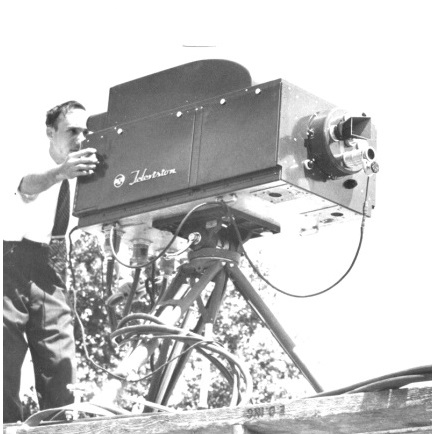
In 1952, there were over 30 remote tests, including two from Palisades Park NJ, but the big one was on October 18, when two of the new Colonial Theater TK40 cameras were used to telecast, in color, the Columbia-Pennsylvania football game from Baker Field. One of the cameras was equipped with the new RCA Electa Zoom lens, while the other used the a normal field array of lenses on the turret, as seen below.

Although there were very few color sets, RCA’s main objective with the experimental color broadcasts was to satisfy the FCC, with the fact that their Dot Sequential system was truly “Compatible”- in that it could deliver the same quality image to black and white TV sets, that monochrome broadcasts offered. Via newspaper ads, local viewers was asked to write to NBC with their comments on reception and picture quality of the color segments.
When color operations moved to the Colonial Theater, the 4 new TK40 prototype cameras were delivered (with 2 seen in the above photo), which had very different control equipment. So, the mobile unit had to have a complete refitting, but when remotes were done, cameras were borrowed from The Colonial for a few days at a time. For more, click on the pix. Enjoy and share! -Bobby Ellerbee


The Demise of NBC Burbank Part 2 by Richard Wirth
The Demise of NBC Burbank Part 2 by Richard Wirth – ProVideo Coalition
Recently, I wrote about the beginnings of NBC’s historic lot in Burbank as the Peacock network completed its move to nearby Universal Studios. The look back on NBC Burbank’s sixty-two year history wouldn’t be complete without exploring some of the technical history NBC engineers made over the years…
Eyes Of A Generation…Celebrating 10,000 Page Likes! THANK YOU!
Eyes Of A Generation…Celebrating 10,000 Page Likes! THANK YOU!
One of the reasons I started this page was to be able to share unique photos and videos that depict television’s glorious history, that also include the back stage element of the business. Like this.
The other reason was to create a home for television history that could make it, a living history…and with your help, eye witness accounts and stories, we have done that…together. Thank You! -Bobby Ellerbee
Thanks to Jim Davis for this new, crystal clear shot of the “Tonight” show set with the great RCA TK41s in use in Studio 6B in New York.
“Howdy Doody” Script, 1960
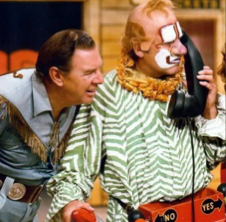
Thanks to our good friend Gady Reinhold at the CBS Broadcast Center, here is one of the many treasures from his personal archives…a real script from The Howdy Doody Show, Notice on the first page, C-K in the top right, which denotes a Chroma Key shot, with actors dressed in all blue, for the “invisible effect”. Enjoy this rare look at a script from the iconic children’s program.
1935: “The House That Radio Built”
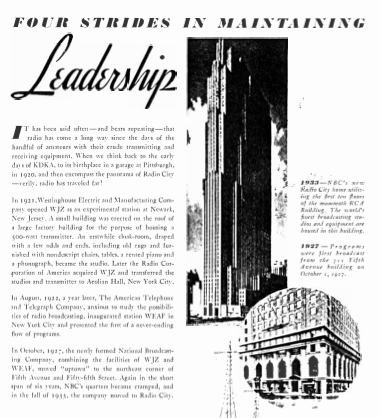
Here is the 32 page book on how NBC’s headquarters at 30 Rockefeller Plaza was built. In this rare, 1935 look at the construction and operation of NBC’s new Radio City facilities, you’ll see all the fascinating technical details, photographs and diagrams your heart could desire.
“I Love Lucy” RARE On The Set Video
This is a close to “being there” as we’ll ever get. This clip, from an “I Love Lucy” movie, takes us inside the Desilu Playhouse and gives us an ultra rare glimpse of what it was like on the set of one of television’s most famous shows.
The location is General Services Studios, Studio 2, which in 1952 got its own audience entrance at 6633 Romaine Street. The sign at the new entrance invited you into the Desilu Playhouse. The first few years of the show were done here.
As we have confirmed with other sources, this was pretty much the same warm up that Desi used for the entire six years, including the camera push in. Enjoy and share! -Bobby Ellerbee
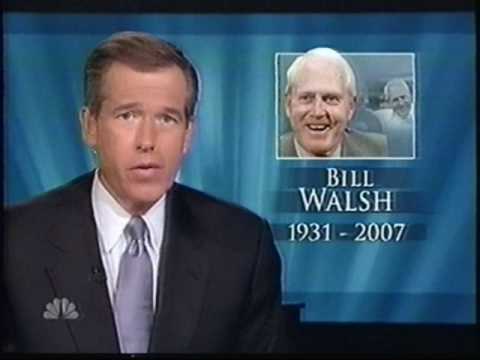

October 15, 1973…”Tomorrow” Debuted On NBC
October 15, 1973…”Tomorrow” Debuted On NBC
The only way to remember this great show is to remember what made it great…Tom Snyder. On the event of his death in 2007, here are remembrances from Brian Williams, Jay Leno and David Letterman. Incidentally, Letterman’s NBC show replaced “Tomorrow”.
“Tomorrow” followed “Tonight” With Johnny Carson and started as a 60-minute series which aired only four nights a week, Monday through Thursday, in order to accommodate the weekly shows ‘Midnight Special’ (1973–81) and SCTV (1981–82) in that time slot on Fridays.
It was originally broadcast from the NBC studios in Burbank, but relocated to New York in December 1974 when Snyder took on additional anchor duties for NBC News and the network’s flagship station, WNBC-TV.
In June 1977, the show returned to Burbank until 1979, when Snyder once again began originating from 30 Rockefeller Plaza.
On September 16, 1980, when “Tonight” was shortened to 60 minutes, “Tomorrow” was scheduled at 12:30 Eastern and lengthened to a 90 minute format that lasted until its cancellation 16 months later. In February 1982, NBC replaced “Tomorrow Coast-To-Coast” with “Late Night With David Letterman”. Enjoy and share! -Bobby Ellerbee
Conan on TBS: Behind the Scene
I’m proud to share with you an exclusive look behind the scenes at Conan’s TBS program from our friend Bruce Oldham.
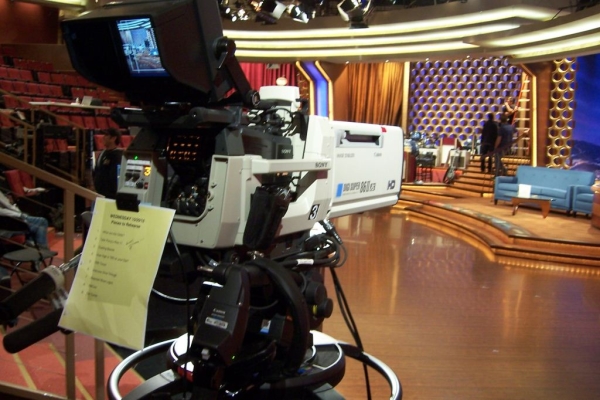
The cameras used on Conan’s version of Tonight were almost identical to those you’ll see here on Stage 15 at Warner Brothers. Camera rehearsals are a couple of hours before the afternoon tape session, which starts at 4:30 PST Mondays through Thursdays.
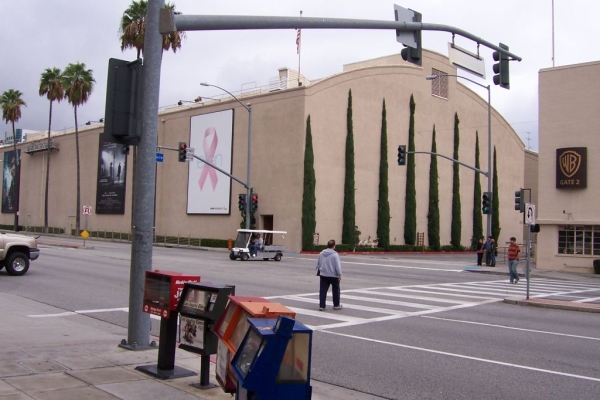
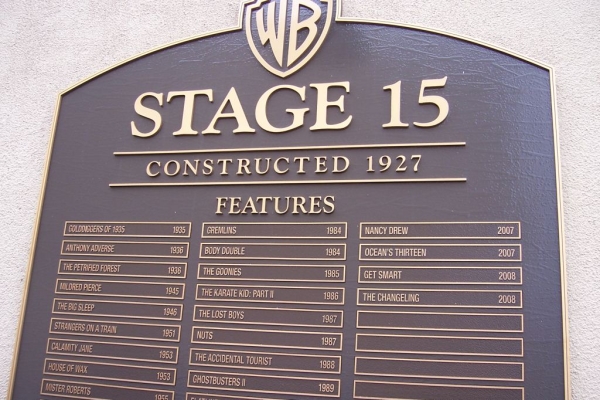
Below are pictures of the show’s Sony HD 1500 cameras…some snugly nestled in their buildup kits, and a couple of Sony 1500s mounted on jibs and small tripods for quick hand-held situations. All together, there are eight cameras in the studio, including a couple of remote-control stationary cameras for audience shots. The main difference is that there are none of the SONY HD 1000 hard-bodied cameras in use like there were at NBC Universal. (I like their look better, but…)


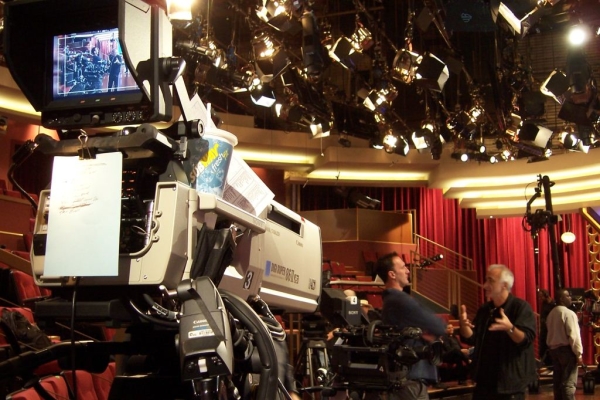
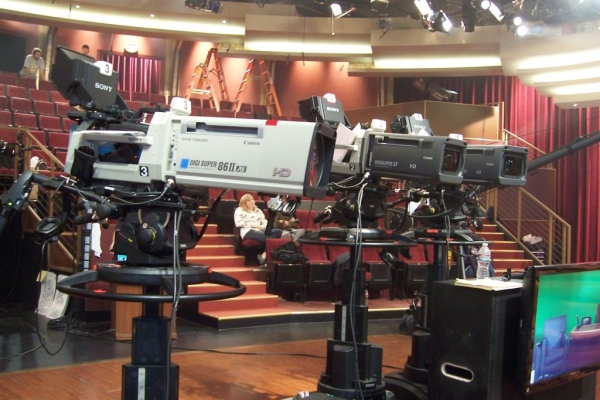
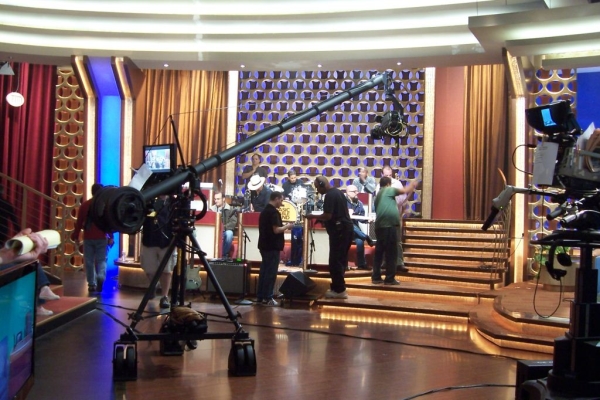
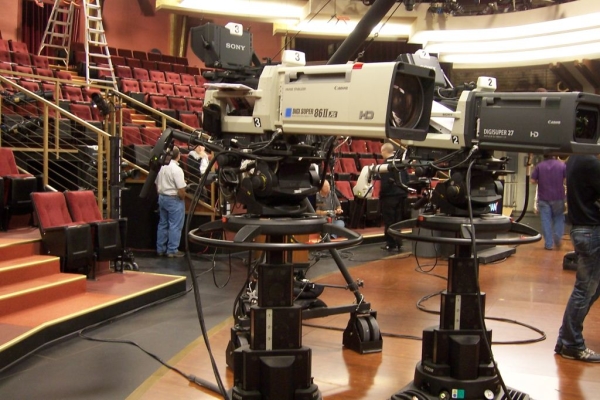

Now, to be honest with you, I get a little lost in the control room and video suites these days, but that’s what’s in this section of our backstage look at Conan’s new digs at WB. Thank goodness they still have audio boards and color bars, because that’s about all I recognize now. I’ll just post these photos below for you to browse through without much comment, but let me add this one little tidbit.
Below, you’ll see some little black boxes with blue screens and handwritten labels that say “VTR.” For anyone who’s ever slung 2-inch tape on Ampex and RCA quad machines, all I can say is…you’ve come a long way, baby! Who would have ever thought VTRs would be small enough to rack-mount two to a row? Yep, these are the latest in Video Tape Recorders. Plus, there is now one for each camera, so a shot is never missed. Remember when car radios were this big?

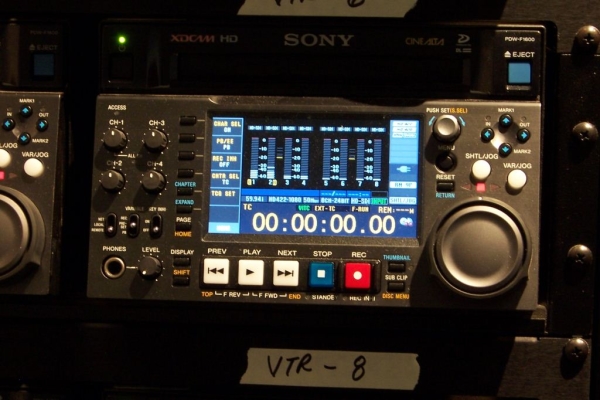
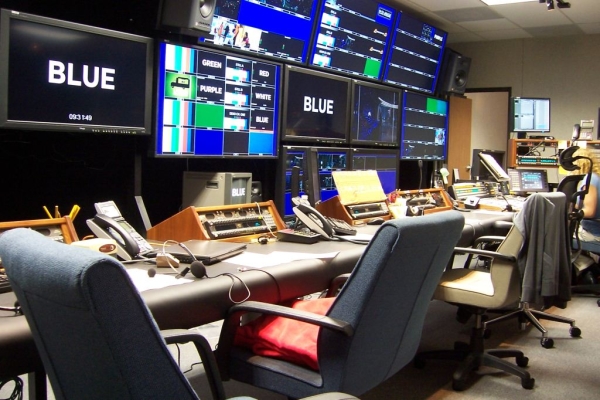
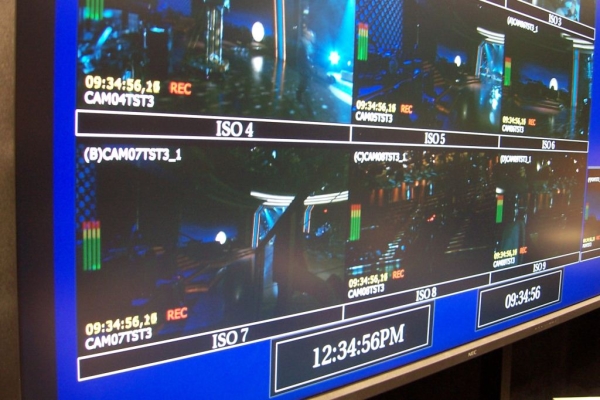
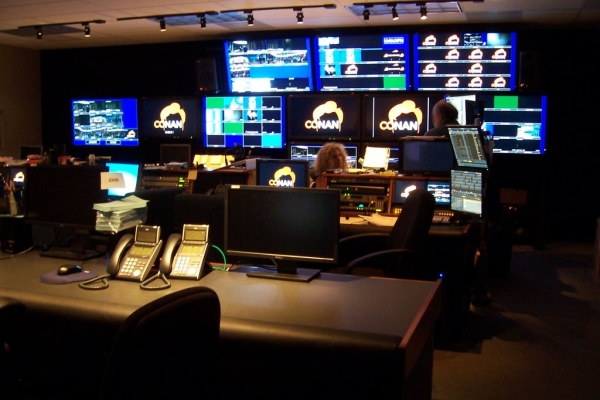
The Moon Backdrop
After the show ends, it goes to edit for final adjustments for time, and maybe different takes of what the director punched up in real time. With every camera feeding a VTR, that’s very easy, and it reminds me of how The Honeymooners was done using the Dumont Electronicams with their film/video capabilities. The live show was directed as a live show, and the takes were all recorded on kinescope. Later, using the kine playback as a template, they cut the film tighter for the final show. The Conan show is fed to Atlanta in separate segments for transmission, and actually, it is not unheard of to have the first segment on the air in the east while they are still editing the final segments in LA. Now that’s what I call a tight schedule.
One of the main points of interest on the Conan set is the background, with its city lights and moon. During the show, the moon slowly tracks across the rear ocean/city backdrop almost without notice, just like if it were a real moon. Somehow the moon’s reflection in the water tracks across the sets background with the moon and shimmers subtly. It’s really a cool trick. Below, Bruce explains how the city lights up and how the “moon” moves and shimmers.
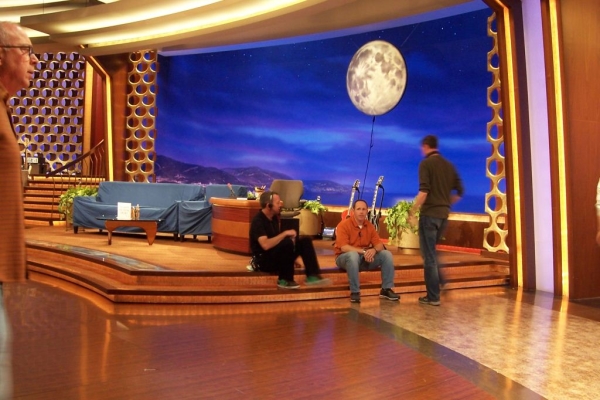
“The backdrop is a hand-painted scene that looks really good even in person. It is glued to the curved wall that is made of two parts. The upper half above the sea line is drywall that is smooth and the lower half is transparent plexi.”
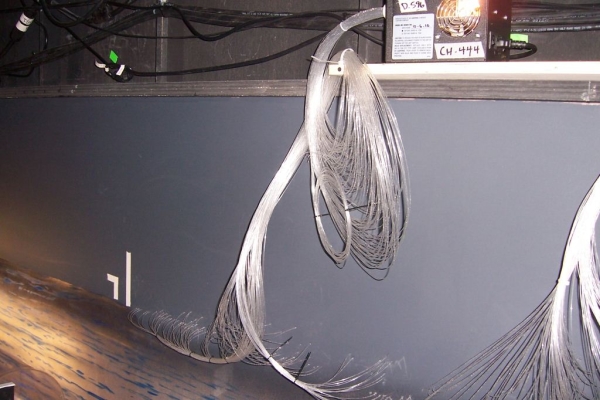
“From the rear of the drop, the ‘city lights’ are created by individual fiber strands that are strategically placed in drilled holes through the drop to appear to be lighted buildings and street lights.”

“The moon is lit inside its housing with LEDs powered by battery during the show. An AC cable is attached during the rehearsal day to reduce battery drain. It is suspended from two wires that are attached to pulleys and a track that is motorized and is operated by a remote control a hobby car or hobby plane would use.”

“The moon ‘reflection’ is ingenious. A light bar illuminates a plexiglas cylinder with painted streaks on it. The cylinder rotates with an electric motor and the light shines through the plexi backdrop to simulate a shimmering, reflecting moon on top of the ocean.”
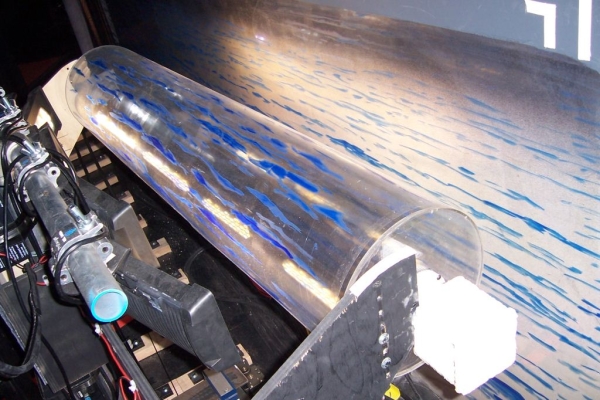
“The cylinder rig is on a track that moves left and right behind the backdrop.”
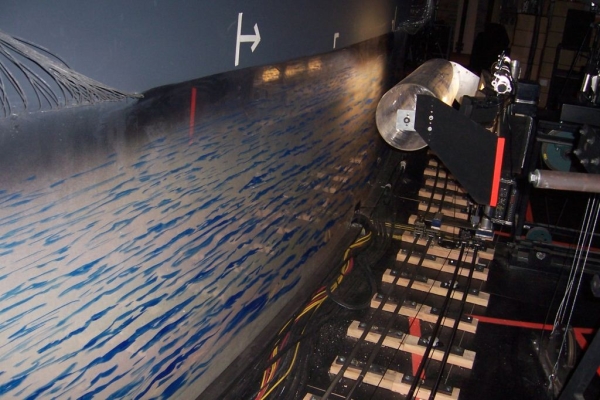
“You can see the track the cylinder rides on, and this is the MOST amazing part of the unit. There are cables and pulleys that are routed from the overhead moon trolley down the side of the backdrop and along this track. When the moon is moved left and right, the reflecting cylinder rig and light bar moves WITH it and is slaved to its path. The ultimate effect is that the moon’s reflection travels with the moon! Pretty cool stuff!
“These physical effects are one most fascinating parts of our ‘Television Magic’. That’s where the true craftsmanship shows up and I love to see what the prop guys and grips come up with to make things work and look different than they appear. Hope this is as interesting to you as it is to me. – Bruce”
Many thanks to Bruce Oldham and the Conan show for sharing these exclusive images with us! I’m a Coco nut! You too?


Flashback…October 14, 2010; “30 Rock” Live From NBC Studio 8H
Flashback…October 14, 2010; “30 Rock” Live From NBC Studio 8H
This 12 minute piece is full of great stuff, all shot in the real NBC Studio 8H. “30 Rock” was usually filmed at New York’s Silvercup Studios, but on October 14, 2010, the show was done live in 8H. Just like in the days before video tape, it was done a second time live for the west coast audience.
The show’s director was right at home as she was the director on SNL for many years, which the fictional show in the series was based on.
October 13, 1947…”Kukla, Fran & Ollie” Debuts On Chicago’s WBKB
October 13, 1947…”Kukla, Fran & Ollie” Debuts On Chicago’s WBKB
At the link is a timeline of the shows milestones, including their October 13, 1947 debut as “The Junior Jamboree” on WBKB in Chicago, the move to WNBQ and NBC, and their last show, 10 years later, which was also on WBKB. http://kukla.tv/history.html
In the five years that the show ran on NBC nationally, fan mail averaged 5,000 letters a day, and the show’s ratings rivaled Milton Burle’s and even Ed Sullivan’s at CBS.
The photo is of one of the early shows at WBKB. The dolly was a home-made rig, with the camera mounted on a barber’s chair. Thanks for the memories, Burr, Fran, Kukla and Ollie! -Bobby Ellerbee
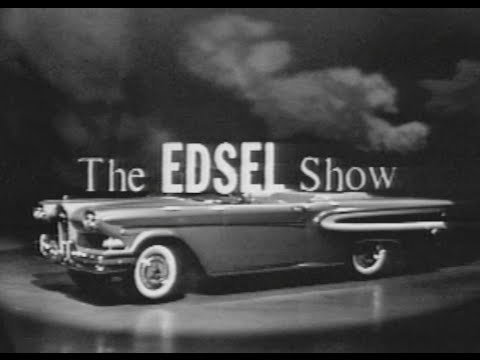

October 13, 1957…A Red Letter Day For Videotape & TV History
October 13, 1957…A Red Letter Day For Videotape & TV History
The first 4.5 minutes of the attached video tells the story and includes comparison shots of the videotape and kinescope version of the oldest surviving, intact videotape program, “The Edsel Show”.
Thanks to our friend Kris Trexler’s love of cars, his interest in classic television and his professional abilities as a film and videotape editor, we are able to see this…the oldest surviving video tape. He is the one who tracked down this tape that everyone said did not exist.
“The Edsel Show” was chosen to be the very first CBS entertainment program to be broadcast live to the nation from Hollywood, then “tape-delayed” for re-broadcast in the Pacific Time Zone. The show was performed at CBS Television City in Hollywood from 4pm-5pm Pacific Time for live viewing from 7pm-8pm Eastern Time. The show was simultaneously recorded on videotape at Television City, then played back 3 hours later for West Coast viewers at 7pm Pacific Time.
After the live broadcast, The Ford Motor Company hosted a lavish party at a Hollywood restaurant, where the cast and CBS and Ford execs wined and dined and watched the videotape playback of the show to the West Coast. The evolution from kinescopes to videotape recording was underway!
Not wanting to risk a high profile failure of the new technology, CBS also created a kinescope backup of the show which the engineers at Television City played simultaneously with the videotape, so in case the tape failed, CBS engineers could quickly switch to the kinescope “protection copy” of the show. Videotape was a new technology and there was much to risk if it failed during such an important broadcast, but it didn’t.
Now, back to the fascinating detective work Kris did… http://www.kingoftheroad.net/edsel/edselshow3.html
You can read the details at the link above from Kris’s website, but in a nutshell…the tape was not in the CBS Video Archives. The kinescope was, but the tape copy was on a TVC engineer’s desk who had personally saved the tape. Remember, part of the miracle of videotape was that it could be reused…the engineer knew it would be if he didn’t rescue it and after the playback, he took care of if for the rest of us to see! Thanks to him and Kris Trexler, here is the “The Edsel Show” that was done October 13, 1957 from CBS Television City. Enjoy and share! -Bobby Ellerbee
https://www.youtube.com/watch?v=Ze0Az9tdkHg
This is the oldest videotape recording in existence. The Edsel Show stars Bing Crosby, Frank Sinatra, Louis Armstrong, and Rosemary Clooney. Produced at CBS …
